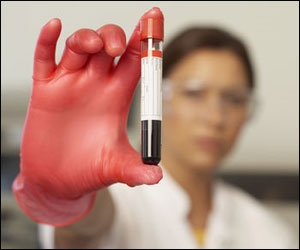📣 For more lifestyle news, click here to join our WhatsApp Channel and also follow us on Instagram
Bloodcurdling mystery ‘solved’
Scientists claim to have finally solved the bloodcurdling mystery,a key breakthrough which has implications for the treatment of bleeding disorders.

Scientists claim to have finally solved the bloodcurdling mystery,a key breakthrough which has implications for the treatment of bleeding disorders.
A team at Harvard University has in fact uncovered the fundamental feedback mechanism that the body uses to regulate the clotting of blood,by applying cutting-edge techniques in single-molecule manipulation,the ‘Science’ journal reported in its latest edition.
“The human body has an incredible ability to heal from life’s scrapes and bruises. A central aspect of this response to damage is the ability to bring bleeding to end,a process known as hemostasis. Yet regulating hemostasis is a complex balancing act,” lead researcher Wesley P Wong said.
According to the scientists,too much hemostatic activity can lead to an excess of blood clots,resulting in a potentially deadly condition known as thrombosis. And,if too little hemostatic activity occurs in the body,a person may bleed to death.
To achieve the proper balance,the body relies on a largely mechanical feedback system that relies on miniscule forces applied by the circulation system on a molecular “force sensor” known as the A2 domain of the blood clotting protein von Willebrand factor.
By manipulating single molecules of this A2 domain,the team found that the A2 domain acts as a highly sensitive force sensor,responding to very weak tensile forces by unfolding,and losing much of its complex three-dimensional organisation. This unfolding event allows the cutting of the molecule by an enzyme known as ADAMTS13.
“In the body,these cutting events decrease hemostatic potential and also enable blood clots to be trimmed in size.
The system is so finely tuned that the A2 shear sensor is able to regulate the size of VWF within blood stream maintaining the optimal size for responding to traumas,” Wong said.
And,to make the finding,the scientists relied upon an “optical tweezers” system developed in Wong’s lab. The tweezers are capable of applying miniscule forces to individual molecules while observing nanoscale changes in their length.
Such manipulations enabled the scientists to characterise both the unfolding and refolding rates of single A2 molecules under force,as well as their interaction with the enzyme.
The finding gives insight into how bleeding disorders,such as type 2A von Willebrand disease,disrupt this regulation system,potentially leading to new avenues for treatment and diagnosis,the researchers said.
📣 For more lifestyle news, click here to join our WhatsApp Channel and also follow us on Instagram